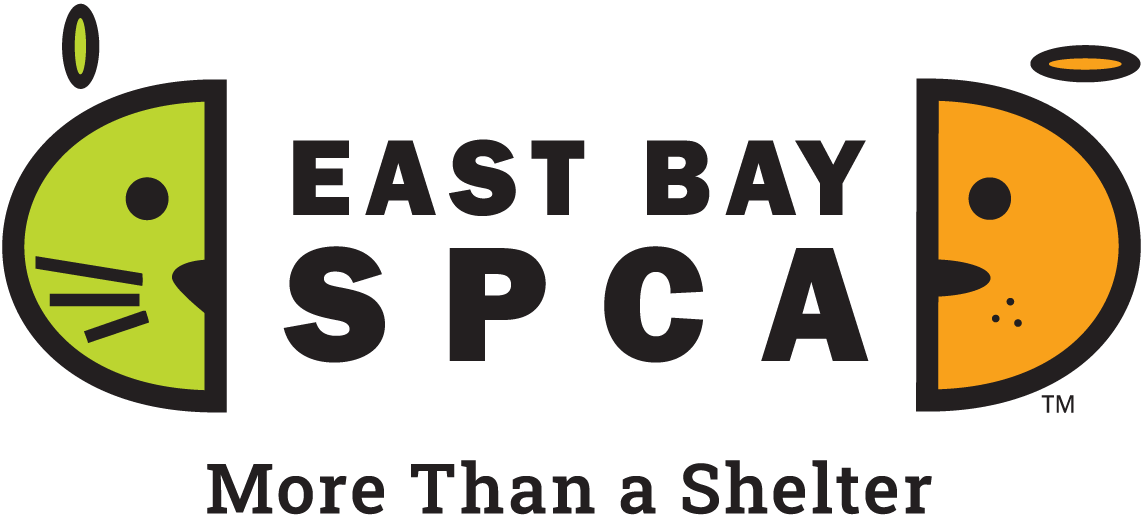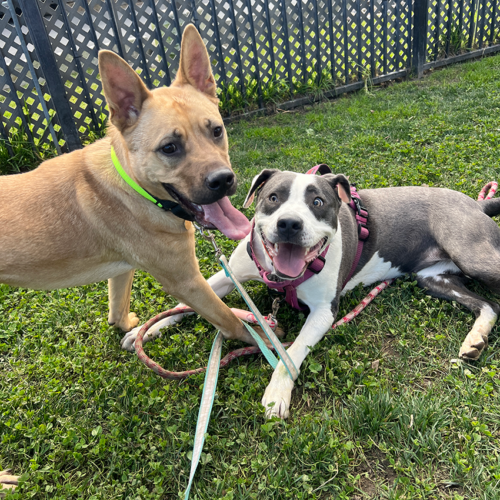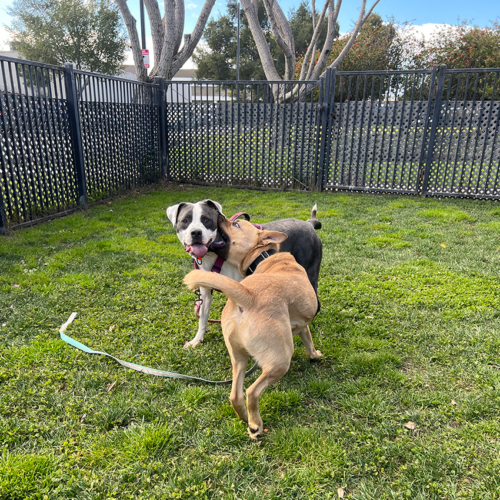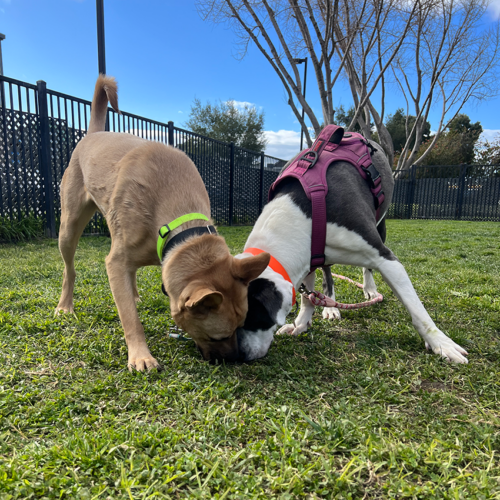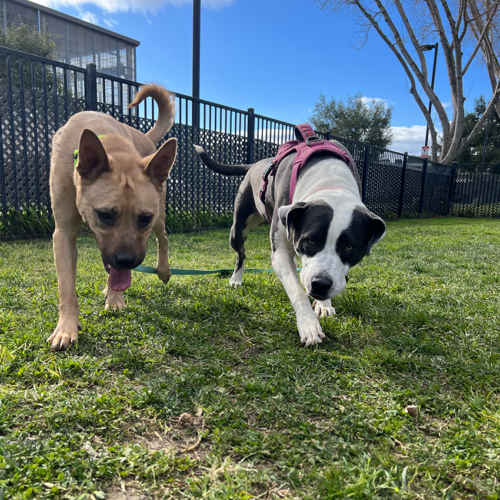Paws & Play: How Dog Playgroups Boost Health, Happiness, and Social Skills
Playgroups Make a Difference
There are a variety of reasons that we make playgroups a priority, but did you know the benefits of regular play are backed by science?
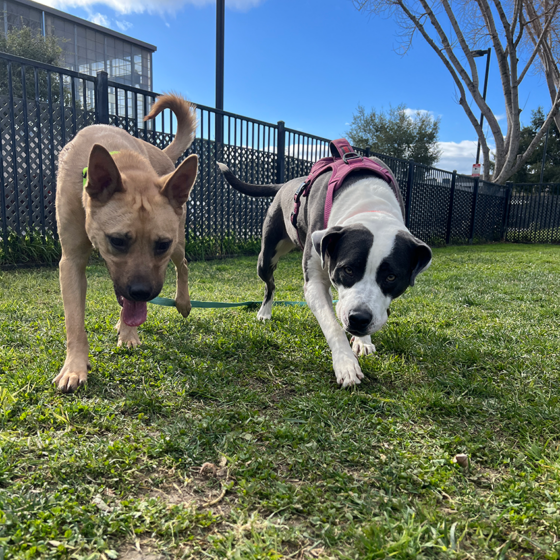
Both Mila and Flint were thrilled to have some social playtime recently. Spotted gal Mila has been in our care for more than six months, and opportunities for extra field trips, walks, and inter-dog interaction are important to keeping her healthy while she waits for the perfect home. Flint arrived on a recent transport out of Southern California and at one year old, he has energy to spare!
“High arousal” activities including one-on-one and even group dog interactions combined with “low arousal” walks and breaks help dogs learn to manage their stress levels more effectively.
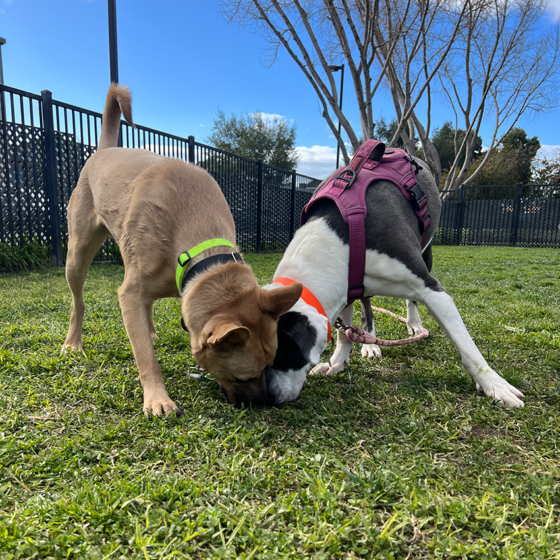
Our Behavior & Training team uses positive reinforcement and best practices outlined by the Shelter Playgroup Alliance to help our in-care canines alleviate some of the day-to-day pressures of shelter life. Stress creates cortisol, and high cortisol levels can lead to a weakened immune system; positive human and animal interactions are therefore very important to the overall health and well-being of our dogs. Enrichment activities, walks, Foster stays and off-campus Field Trips also provide novel stimuli, exercise, and socialization, along with all kinds of benefits for our canine friends.
The Method
Managing arousal levels in our dogs during any high arousal activity is a key component of setting the context for dogs to be “happy” and learn emotional self-regulation. This can happen through toy play, exercise like jogging or hiking, or sports. Playgroups are just one way to utilize the benefits of these tried-and-true methods.
Our team follows best practices outlined by the Shelter Playgroup Alliance and positive reinforcement methodology, along with close observation of animal body language throughout to ensure that playgroups are safe and enjoyable for all.
- We start by pairing dogs whose size, personalities, and interaction styles match up well, then begin with a slow, “low-arousal” meet-and-greet on leash. Keeping leashes loose, we ensure the dogs have the choice to engage or disengage depending on their preference.
- If dogs are showing pro-social body language like soft tail wags and tension-free features, we drop leashes, and the fun begins!
- With all dog interaction our team keeps a close watch (and plenty of treats on hand) so we can reinforce desired behaviors and step in if over-stimulation or frustration occurs between pups.
- In between exciting, “high-arousal” interactions, we make sure dogs get plenty of breaks from play, where they can have a treat, relieve themselves, or check-in with a friendly human. With dogs who’ve just met, breaks are more frequent. With dogs who know each other better, they might go 5 minutes between breaks.
Managing healthy dog interactions is our goal, and our dedicated team are not only knowledgeable in a variety of training techniques and principles, but compassionate and skilled at ethical training and care. Many of these skills are transferable to pet interactions, and our training courses and webinars can help you get started on reinforcing positive play with your dog(s). To learn more about positive reinforcement, visit our Training Resource Library.
